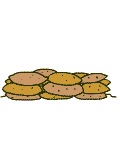
republic of poland
WZ 31
Model: WZ. 31
Year: 1935/1939
"Salamander"
Manufacturer: Ludwikow
At the end of the First World War, Poland regained its independence, which led to the creation of the new army of theSecond Polish Republic, by theMarshal Pilsudski.
After the Russo-Polish war in 1921 for the establishment of the new borders between the recently created Soviet Union and the Republic of Poland, the standardization phase of the new Polish army began and with it also its uniformity, arising the need for the development of a new Polish-made helmet. The first attempt was the modelwz. 28, which was a hybrid between the German M16 helmet and theAdrianFrench, a helmet that was considered inadequate for the use of the army, so that its use was left for auxiliary units, civil defense and health.
Finally already in 1931, after contacts with Swedish manufacturers, the engineersLeonardo Krauz and Marian Mikolajski designed the new helmet model called Wz. 31 and that would be officially distributed to the army from 1934, being the helmet in use in 1939 with the German invasion of Poland. The distribution of the new model was therefore very irregular for the cavalry, and some anti-aircraft artillery units distributed the modelAdrianFrench.
Although the design of the new hull was very innovative, the interior trim of the German M16 model was adopted, but mounted on a metal band attached to the hull by three metal clips or rivets.
Before the start of the war around 300,000 helmets were produced, in factories in Silesia andLudwików. According to its manufacture, some differences are observed in terms of the shape and method of fastening the strap to the helmet, those manufactured in the Silesian factory are fastened to the helmet by rivets that are inserted into it, and those manufactured byLudwikówThey are staples that hold the strap.
One of the characteristics of this helmet is its texture based on a cork mixture to avoid reflections, a technique that the United States adopted in 1941 for its M1 helmets. This Polish helmet texture is called "salamander". The first examples were painted in khaki-dark green.
Another feature of the helmet is its chinstrap with a peculiar hook consisting of a figure-of-eight loop that attaches to a bent metal hook.
Finalizada de la guerra este modelo de casco se mantuvo en uso en el ejército Polaco hasta 1950.
El ejemplar de la colección carece de interior, se observa claramente la textura tipo "salamandra", y se observan las grapas para la sujeción del zuncho de los modelos fabricados en Ludwików. En la cara interior de la visera se observan también unos marcajes en relieve que podrían ser el 4 y el 3, que podrían indicar que este casco fue fabricado en las primeras remesas.
Se han añadido al casco para completarlo, réplicas de la guarnición interior y del barboquejo ambas de manufactura polaca.


